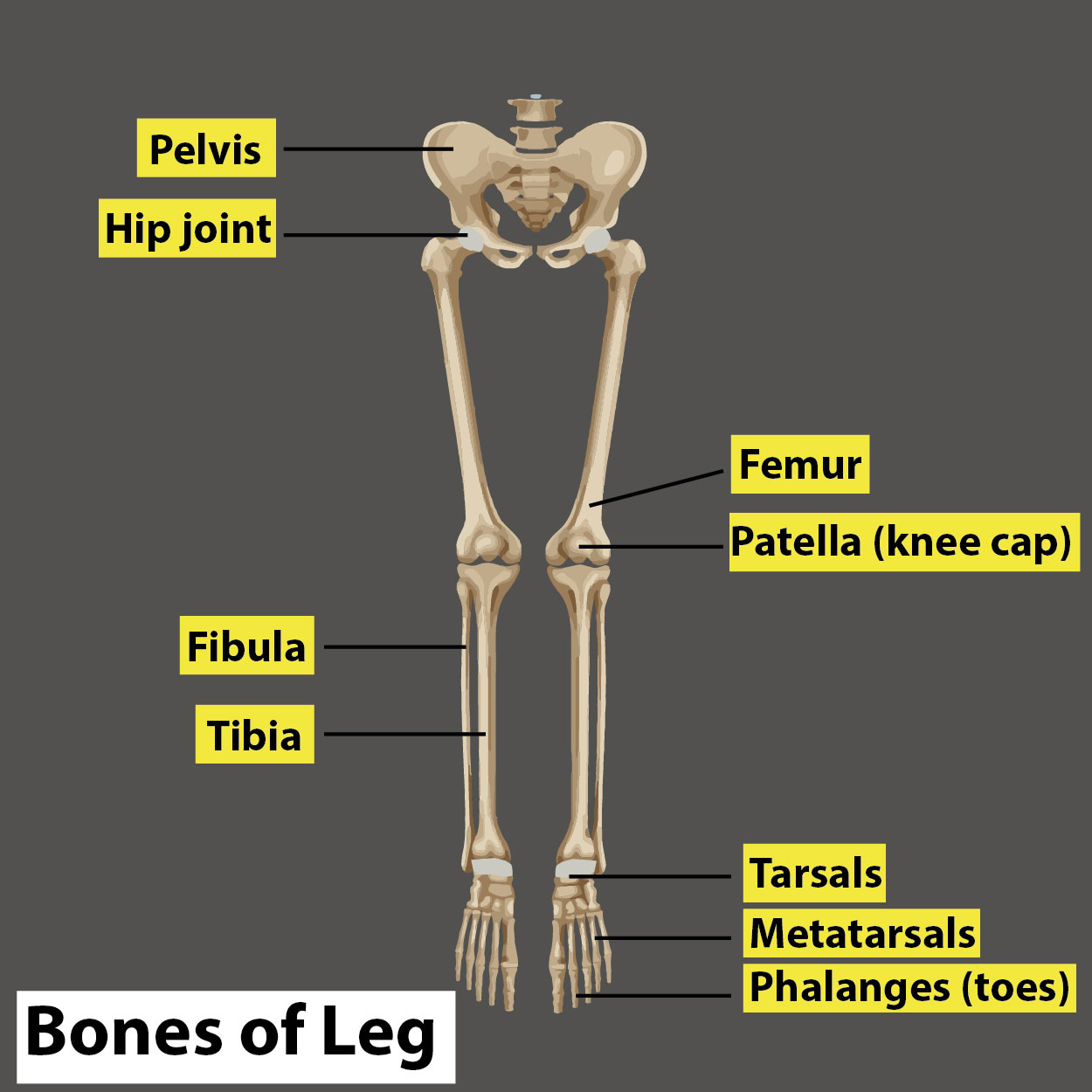
A cricket player is fast chasing a ball in the field. Which one of the following groups of bones is directly contributing to this movement?
(a) Femur, malleus, tibia, metatarsals
(b) Pelvis, incus, patella, tarsals
(c) Sternum, femur, tibia, fibula
(d) Tarsals, femur, metatarsals, tibia
Answer
572.4k+ views
Hint: Bones protect the various organs of the body, produce red and white blood cells, store minerals, provide structure and support for the body, and enable mobility. This set of the given bones constitutes our hind limb and thus they directly participate in chasing the ball.
Complete Answer:
When a cricket player is running fast in pursuit of chasing a ball in the field, intuitively this motion requires the movement of the legs or the lower limbs in the human body.
- The lower limb contains 30 bones, namely the femur, patella, tibia, fibula, tarsal bones, metatarsal bones, and phalanges.
- The Femur is the longest and strongest bone of our body. It articulates with the acetabulum of the hip bone to form the hip joint.
- The tibia is the medial bone of the leg and is larger than the fibula, and it is the main weight-bearing bone of the lower leg.
- The tarsal bones each of the seven bones form the posterior portion of the foot.
- The metatarsal bones each of the five elongated bones from the midfoot.

So, the correct answer is” Tarsals, femur, metatarsals, tibia”.
Note:
1) The rest of the hind bones that constitute the hind limb are:
- The patella: is the kneecap. It articulates with the distal femur bone.
- The fibula is the thin bone present in the lateral leg.
- The phalanx bones of the foot: each of the 14 small bones in the toes.
- The tibia is also called the shin bone.
2) The lower limb of the human body is made up of three regions:
- Thigh: a portion of the lower limb located between the hip and the knee joint.
- Leg: specifically the region between the knee joint and the ankle joint.
- Foot: it is distal to the ankle.
Complete Answer:
When a cricket player is running fast in pursuit of chasing a ball in the field, intuitively this motion requires the movement of the legs or the lower limbs in the human body.
- The lower limb contains 30 bones, namely the femur, patella, tibia, fibula, tarsal bones, metatarsal bones, and phalanges.
- The Femur is the longest and strongest bone of our body. It articulates with the acetabulum of the hip bone to form the hip joint.
- The tibia is the medial bone of the leg and is larger than the fibula, and it is the main weight-bearing bone of the lower leg.
- The tarsal bones each of the seven bones form the posterior portion of the foot.
- The metatarsal bones each of the five elongated bones from the midfoot.

So, the correct answer is” Tarsals, femur, metatarsals, tibia”.
Note:
1) The rest of the hind bones that constitute the hind limb are:
- The patella: is the kneecap. It articulates with the distal femur bone.
- The fibula is the thin bone present in the lateral leg.
- The phalanx bones of the foot: each of the 14 small bones in the toes.
- The tibia is also called the shin bone.
2) The lower limb of the human body is made up of three regions:
- Thigh: a portion of the lower limb located between the hip and the knee joint.
- Leg: specifically the region between the knee joint and the ankle joint.
- Foot: it is distal to the ankle.
Recently Updated Pages
Master Class 11 Business Studies: Engaging Questions & Answers for Success

Master Class 11 English: Engaging Questions & Answers for Success

Master Class 11 Computer Science: Engaging Questions & Answers for Success

Master Class 11 Social Science: Engaging Questions & Answers for Success

Master Class 11 Maths: Engaging Questions & Answers for Success

Master Class 11 Biology: Engaging Questions & Answers for Success

Trending doubts
Differentiate between an exothermic and an endothermic class 11 chemistry CBSE

10 examples of friction in our daily life

One Metric ton is equal to kg A 10000 B 1000 C 100 class 11 physics CBSE

Difference Between Prokaryotic Cells and Eukaryotic Cells

State the laws of reflection of light

Explain zero factorial class 11 maths CBSE




